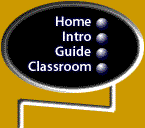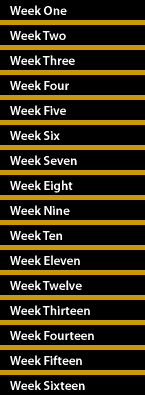 |
 |
 |
 |

Week
4: The Earth
Weeks 4, 5, and 6 make up a three-week cycle about land. Currently, you
are in Week A: Teacher As Researcher.
This week you should refer to the resources listed under Readings &
References, and you need to complete the assignments listed under Assignments
& Rubrics. This week’s assignments focus on…
|
Individual:
- Doing
an activity with your students.
- Exploring
Rocks
- The
Little Rocks
- Diggin'
Dirt
- Posting
reflections about what students learned from the activity.
- Responding
to teammates' reflections.
- Suggesting
criteria for effective concept-building activities.
Team:
- Developing
criteria for effective concept-building activities and the learning
and teaching strategies that make them work
|
Readings
& References
Read:
Model your sample terrarium for your students. Keep this terrarium on
hand as you may use it again for the Weeks 4 and 7 activities.
Read: Planet
Earth, while probably one of an infinite number of stellar satellites
in the universe, is the only one that people really have begun to understand
in depth. Earth materials or matter, while seemingly very diverse, were
probably all formed from just one element (H2) in the nuclear
furnaces of stars and planets. The history of the Earth, as reconstructed
in human understanding, is a story of materials made in a stellar "blast
furnace," collected and mixed in a "blender," melted, solidified
and plowed, pushed, forced by heat, wind, water and rocks for over four
billion years. Of course this stable, yet changing, Earth has also served
as the platform (or skeleton) for the development of a living planet.
Science education
should help students develop an understanding of Earth history as well
as understand the dynamics of daily Earth processes. The inquiries that
seem to have the biggest long-term payoff for developing K-4 student understanding
are those that involve direct contact with and investigation of examples
that are taken directly from the students' experiences. Thus, this three-week
cycle about land is designed to focus on inquiry learning developed from
local materials and events:
- What rocks, sand,
clay and soil do the students have in their neighborhood?
- What are they
made of?
- How did they get
there?
- Where are they
going?
- Why are they important
to life?
- How do the air,
water, living organisms, and sun affect and interact with these materials?
Recommended Web
Sites:
Assignments
& Rubrics
You will work individually and in teams to address
land during this three-week cycle. When doing this week's assignments,
think about some possible answers to the essential questions below.
- How do rocks change?
- Where does soil
come from?
- How does the soil
help plants grow?
- What happens to
plants when they die?
- How do earthworms
affect the soil?
Use the links below
to access the assignments and rubrics.
Week
A: Teacher As Researcher - Individual
Classroom Action Research Assignment
& Rubric
You will do an activity with your students, reflect on the provided
questions, reply to your teammates' reflections, and suggest criteria
for effective concept-building activities.
Week 4 Land Activities
Week A: Teacher As Researcher
- Team
Criteria-Building Assignment &
Rubric
You and your teammates will develop and agree on criteria for effective
concept-building activities.
[
Back
to Outline ]
[
Home ] [ Intro
] [ Guide ] [
Classroom ]
|
 |
 |




|
 |